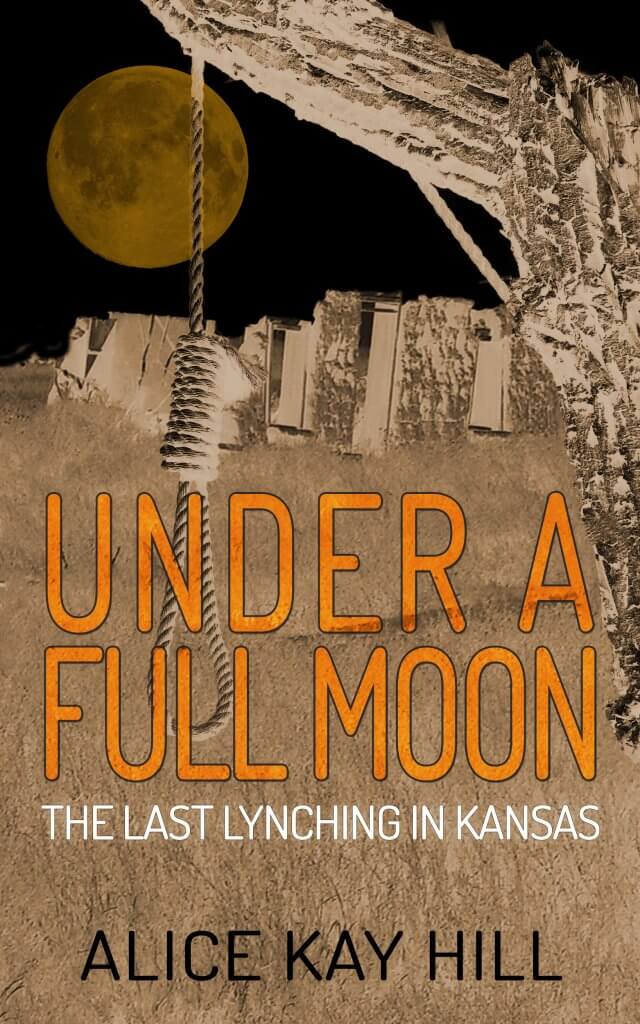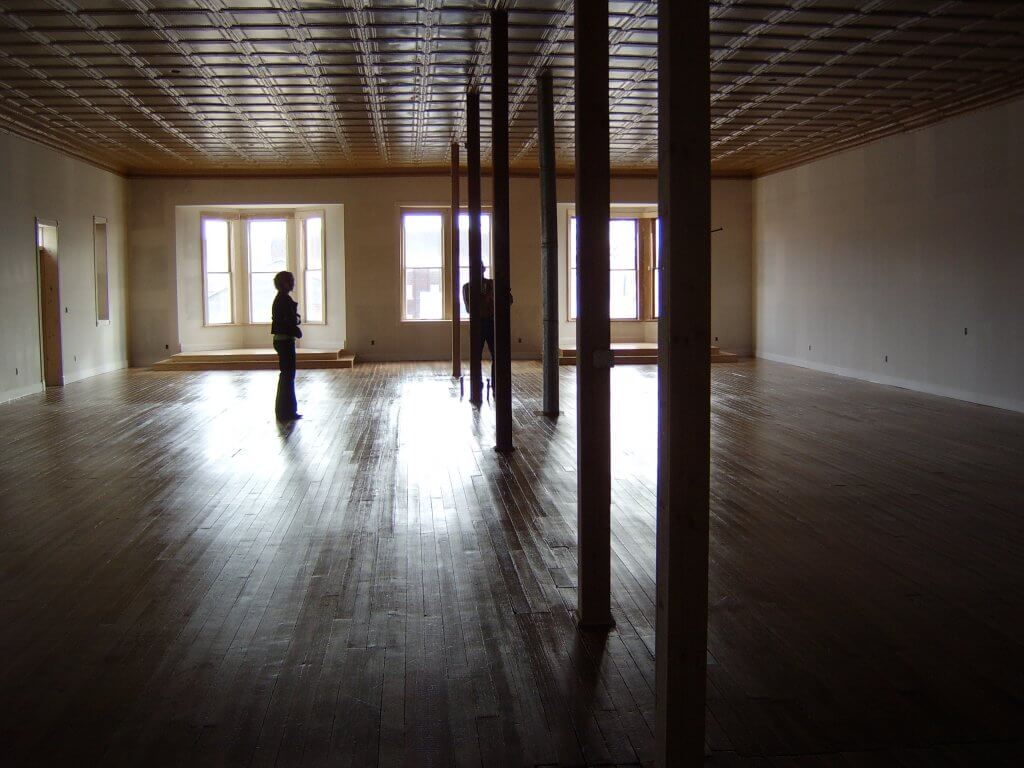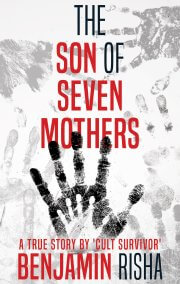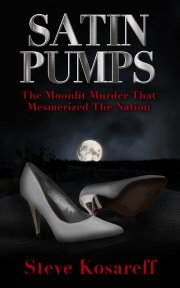The 1907 Shirley Opera House nearly burned before it was built. A barrel of tar ignited and was extinguished but reignited later causing considerable damage to the construction.
One of the workers fell from the rafters. No record of his injuries was listed.
The Red Heifer Saloon, managed by Bert Hotchkiss, brought male violence within the walls. Rumors of a deadly shooting and of an Indian woman being thrown to her death from the upstairs are tied to that period.
Dorothy Eileen Hunter, an eight-year-old child held captive by Pleasant Richardson Read, was last seen alive in the Owl Café in the spring of 1932. Learning of this was the impetus for writing UNDER A FULL MOON The Last Lynching in Kansas.
Perhaps these and other energies are trapped in the mortar and red brick of this century building.
I have personally experienced several events which I will share.
THE TRICKSTER SPIRIT: electronics were a primary target. During the years we ran the Aberdeen Steakhouse and Pub we burned up mobile phones like cordwood. Often, we listened to long messages left on the answering machine with otherworldly, spacey sounds. These messages far exceeded the normally allotted message time. Other messages would have recorded “You have reached a number that is no longer in service. Please hang up and try again.” That is a message which should only be heard when dialing out, not one heard on an incoming call. Customers would report attempting to call for reservations only to have the phone ring and ring without answer – even while I was in the building and knew the phone had not rung.
Others who had run businesses in the building before we had bought it had warned us. One story was of an adding machine which ran and ran, even when unplugged and contained no batteries.
The Trickster also like to ‘take’ things from customers. Folks would enjoy an evening with friends and family, go home, and then call to ask if we had found: a watch, a ring, a coat, a hat, even a pocketknife … Of course, we had not. Some of these items seemed impossible to lose! We joked that one day we would see the ‘invisible man’ walking down the back hallway fully dressed in our customers’ belongings.
Sometimes the Trickster got a bit mean. A Christmas party for the local hospital brought a packed dining room and put us in high hustle to get everyone served. I had set a round tray on a totally flat surface and had loaded it with desserts in glass bowls. I turned to close the refrigerator door and from the corner of my eye saw the tray lifted, throwing the desserts onto the floor! I recall stomping my foot in anger, saying out loud, “I don’t have time for this nonsense! Cut it out!”
Another event which taught me a lesson was when one of our musicians had to cancel due to illness. We had begun hosting twice monthly live music events and had noticed the Trickster seemed to be appeased. It was just my daughter and me in the building, getting ready for the supper crowd. I had placed a sign on the door to alert our guests that the music was cancelled for the night and a stranger followed me inside. I explained we were not open quite yet, but he said he just wanted a beer and would soon be on his way. As I was telling him the history of the building – every visitor wanted to know more about it – I pulled a beer mug from the freezer. It shattered in my hand! I apologized to the guest and got another one. This freezer was a few feet away from the keg cooler. When I drew on the tap to dispense the beer, nothing came out. I knew this was a nearly full keg and it had been running fine the night before. I apologized and asked if he would take another kind. He was willing, but that one too failed to run. I opened the cooler to find the lines were completely frozen, which was essentially impossible. The whole room felt tilted and I could sense the customer was regretting having come in. I gave him a bottled beer, which he drank quickly before leaving. The entire night was one of missteps and mistakes and discord. We promised that from then on, if a music event were cancelled, we would just close the restaurant. Fortunately, that was the only cancellation.
THE GREY WOMAN: Between the east wall of the Opera House and the west wall of the law office there is an enclosed area. It is open to the sky and accessed through two patio doors in the Opera House wall. In this space I attempted to create a garden patio. Over time I found this did not work well as it was brutally hot in the summer and filled with snow in the winter. However, while trying to build planters set up hardscaping, I spent quite a lot of time there with my little granddaughter. She was about two years old then. I glanced up to see a shape pass in front of the patio doors and thinking someone had come inside looking for me I stepped into the building. No one was there. I returned to the patio and shortly saw the shape again, a female shape with a grey, gauzy covering, passing by going in the opposite direction. She gave off an aura of extreme sadness. My granddaughter and I left for the day.
THE UNHAPPY CHILD: As is related in the beginning of UNDER A FULL MOON, my granddaughter spent much time with me from her infancy into childhood at the Opera House. She was sensitive to the trapped energies. The crying of a little girl made her incredibly sad. Near this same time, she also saw the face of an ‘ucky man’ that terrified her. The most distressing visual for me was frequently finding a child’s handprint on the interior glass of the doors leading outside. I was meticulous about keeping the front entrance clean and free of fingerprints, so I knew these should not have been there. Often, no child would have been in the restaurant at all as we catered more to adults who wanted a nice night out. Each time I wiped away the print, fingers spread in a clear attempt to push open a door (though the doors actually opened inward) I grieved.
Much later in time, as the upstairs restoration was completed as far as our budget would allow, our second granddaughter was with her sister and momma as well as our other daughter and her son, looking things over. I was not upstairs, but I heard a thump and loud crying. They all came hurrying down calling for me. My little girl was carried by her momma, her thick brown curls cascading around her hot face. She was sobbing loudly, and I could see a split open area above her eyebrow. My daughter said, “I don’t know what happened. She was just walking towards the window and she says she was pushed. No one was near her, but it looked like she was shoved hard. She hit her head on the corner of the window.” I had a sudden image of an angry child, jealous of this little one’s life and energy, her beauty, and her future.
Our son-in-law, the father of the two granddaughters, was our grill man for the steakhouse. One night he had to return after closing to be sure something was turned off as it should have been. He reported that, as he was starting to leave, he felt as if something had taken him by his belt and the back of his neck and rushed him out of the building. After that, he refused to go in alone.
Without question old spaces hold within themselves both good and bad energies.
When we began the music series at the Opera House there was a ‘softening’ of the troubles. While we were never able to complete our dream of returning the upstairs to its original use most of the musicians toured that big space to hear our plans. They were all highly supportive, as it is getting harder for independent musicians to find venues to perform in. One group, The Boulder Acoustic Society, made the statement, “There’s music in the walls.” For nearly five years we hosted performers from across the country. As the reputation of the Opera House spread within the world of musicians, we even drew international musicians from Australia and Ireland. Some of the more well-known names are Michael Martin Murphey, Al Petteway and his wife Amy White, and Stephen Bennett. Each event has its own story.
ONE FINAL STORY: as part of the effort to have this building accepted into the Registries of Historic Places I traveled to Topeka, KS to be present at the Board of Review meeting. This was a big event for a farm wife not accustomed to travel or big city life. I stayed alone overnight in a hotel during a horrid thunderstorm that rattled the windows.
The next morning, I went to the Kansas State Historical Society complex and walked around the campus which was littered with tree damage from the storm. One building gave me an immediate sense of despair. Upon reading the plaque I soon understood why. This was the boarding house of Native American children who had been removed from their families. Certainly, the trapped energies from this tragic time seeped from these walls. https://www.kshs.org/p/potawatomi-mission/11910
During the presentation for the 1907 Shirley Opera House my heart was beating so fast I was at risk of hyperventilating and passing out in front of the board members. Fortunately, I managed to say my piece, speaking of the tenacity of the Kansas people and how deeply my family was rooted in Rawlins County soil. You can imagine my elation on the drive back to Atwood when the decision to accept the Opera House was made!

Upon returning I went first to the Opera House to tell it the good news. That may sound silly, but throughout our time in working within its spaces I spoke to it frequently, sharing dreams, admiring its beauty, asking for its help to bring everything to pass. I went upstairs, as that is the true heart of the building. As I stood facing the south windows which look out over the town and announced the grand success, I noticed something new, something which had not been there before.
As part of the preparation for restoring the upstairs we had torn out old walls that were not original to the large room. The photo shows some of what we faced in that portion of the project. On the south wall, next to the window, there were structural boards exposed. One of these boards had ‘turned itself around’ and the side which had been hidden was now facing me. On it, written in cursive and elaborate handwriting, was a name: C.R. Buzbee, Colorado Springs, CO. Though I tried to trace this name via Ancestry.com I had no luck. But the builder, whoever he was, wanted to be noticed! Even curiouser is how a board, with writing on the back, could have turned so that the writing was read right side up. The spin was on its short ends. Try it!







 Join our email list
Join our email list
Alice
You may not remember us but this is Scott and Marie McGinley from Wichita, the Grandson of Sheriff ED. McGinley. You and your husband were kind enough to give us a tour of the Opera House a few years ago.
I just finished your book and want to commend you on a very good read. The whole approach was was unique and very informative. I appreciated the McGinley references and felt you were on track with the old family stories about the event. I will be recommending it to the family.
Keep up your good work.
Scott McGinley
Thank you Scott! Yes, I remember the time you and Marie visited Atwood and toured the Opera House. I appreciate your thoughts about UNDER A FULL MOON The Last Lynching in Kansas, especially with your family connections. It was an honor to research this book and gave me a strong sense of the difficulties folks went through to settle in NW KS. So much still holds true today. Alice